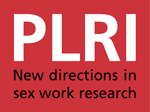“Over here, it's just drugs, women and all the madness”: The HIV risk environment of clients of female sex workers in Tijuana, Mexico
HIV vulnerability depends upon social context. Based in broader debates in social epidemiology, political economy, and sociology of health, Rhodes’ (2002) “risk environment” framework provides one heuristic for understanding how contextual features influence HIV risk, through different types of environmental factors (social, economic, policy, and physical) which interact at different levels of influence (micro, macro). Few data are available on the “risk environment” of male clients of female sex workers (FSWs); such men represent a potential “bridge” for transmission of HIV and other sexually transmitted infections from high- to low-prevalence populations. Using in-depth interviews (n=30), we describe the HIV risk

